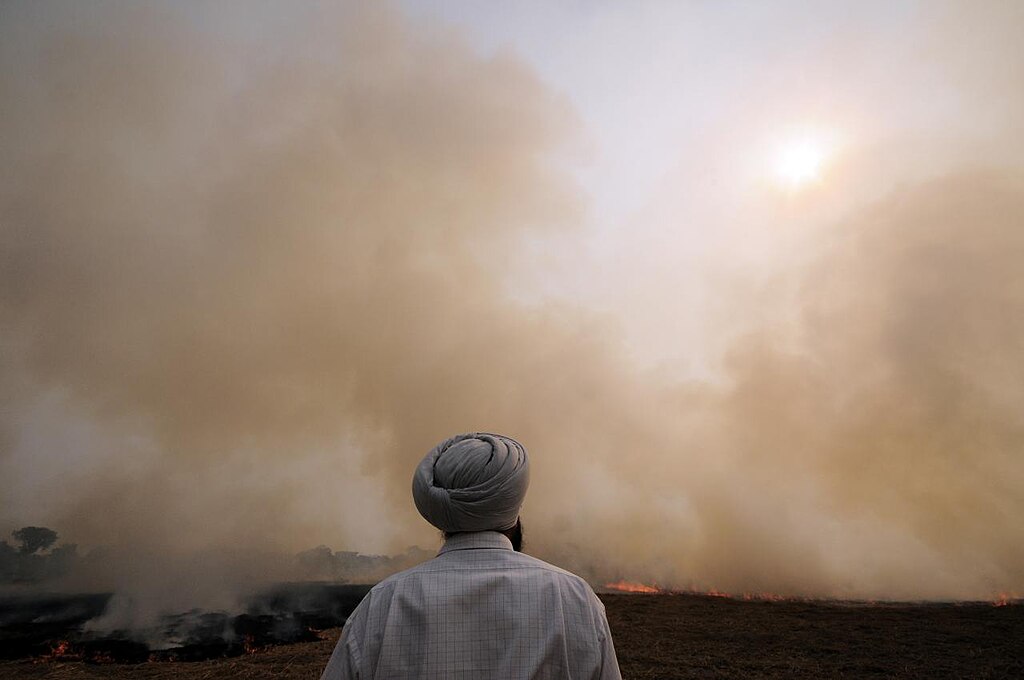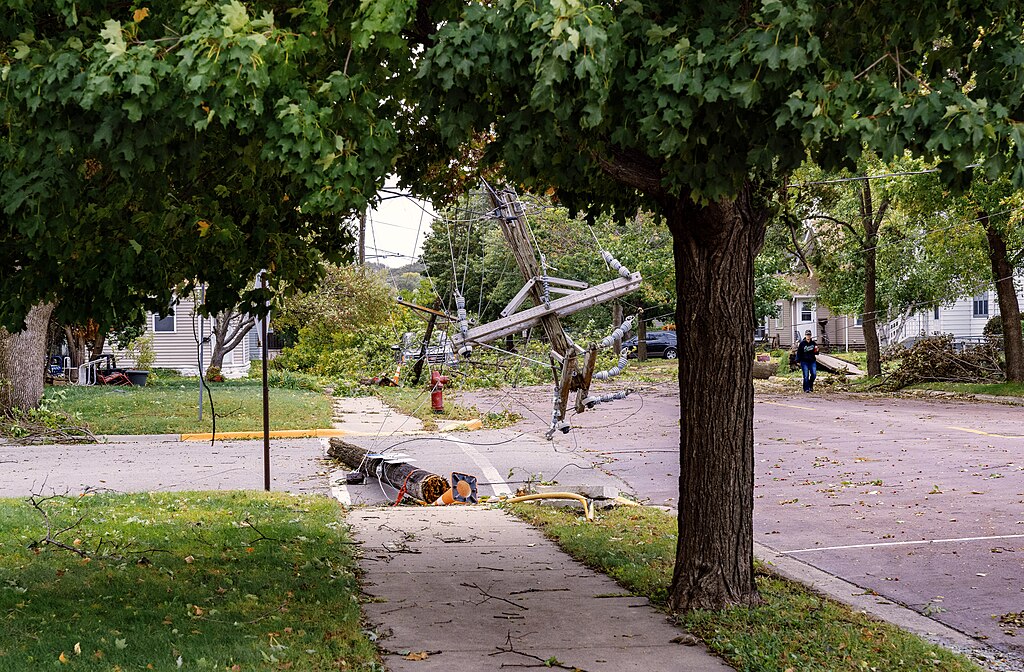Political views best predict climate change concern, study
Digital Writer/Climate Change Reporter
Wednesday, September 26, 2018, 1:37 PM - Political beliefs and climate change concern, biggest polluters facing huge climate change impacts, building sea walls to stop glacier melt, and the stress electricity grids are struggling with. It's What's Up in Climate Change.
POLITICS AND CONCERN ABOUT CLIMATE CHANGE
Diligent recycling, bicycling everywhere, and diet low in meat are all environmentally conscious actions that could suggest that the individual is knowledgeable about climate change, however their political opinions could speak louder than their literless habits. Analysis of climate change attitudes from 36 countries reveals that the best predictor for an individual’s concern about climate change is commitment to democratic values, which was recently revealed in a new study.
The data comes from Pew Research Center's 2015 Global Attitudes Survey and analysis was conducted by comparing climate change concern to variables such as gender, education, age, income, and religious identification. Democratic values are defined as belief in free elections, equal rights for women, freedom of speech, freedom of the press, freedom of religion, and lack of Internet censorship.
Results from the study include:
• Women were significantly more likely than men to believe that climate change is a serious problem in only three countries - US, Canada, Korea
• Education increased concern about climate change in only ~25 per cent of the countries
• Young people were more likely to believe in climate change in only three countries - US, Ghana, and the UK
• Religiosity and party identification were approximately of equal strength as a predictor of climate change concern, and only fell significantly in the US and Australia
• Religiosity was the strongest predictor of belief in climate change in five countries - Indonesia, Palestinian territories, Kenya, India, and Nigeria
• Commitment to democratic principles is a nearly universal predictor of climate change concern, with variations in only Africa and Latin America
These results counter the theories that women are more environmentally concerned, education increases concern about climate change, and the generation facing increasingly worse impacts is the most concerned. Commitment to democratic values was the strongest predictor in half of the countries and in all regions included in the study, except for the English-speaking Western democracies, who largely diverge from the rest of the world.
There are both overlapping and contradictory explanations for this democratic divergence. The researchers theorize that conservative parties, particularly in the US, are commonly opposed to policy responses to climate change because of opinions such as: 'man is placed above and has dominion over the environment', belief in the moral authority of the free market to reach the right conclusion, regulation and taxes interfere with free market capitalism, and laws of nature are responsible for differences in wealth and society. Polarization in news sources and an increase in politically motivated reasoning are also cited as possible theories.
While the climate change concern patterns in the US can resemble those in other English-speaking Western democracies, there are wide differences in societies, political parties, and economies. The researchers conclude that stronger theoretical explanations for climate change concern patterns globally and in the US would increase understanding of how these patterns arise and how policy could provide better climate change mitigation and adaptation.
THESE WORLD POWERS WILL BE HIT THE HARDEST BY CLIMATE CHANGE
Who will be the biggest loser when climate change intensifies? Some countries will be blasted by heatwaves, others will be forced out by rising shores, and knowing who will be hit the hardest can increase people's understanding of how exactly climate change is creating destruction and motivate action. A new study evaluates over 200 countries to assess the social cost of carbon (SCC), which is a value that represents the economic cost associated with the damages or benefits of one additional tonne of human-released carbon dioxide, and finds that three of the world's most important world powers will be largely affected.

Burning of rice residues after harvest, to quickly prepare the land for wheat planting, around Sangrur, SE Punjab, India. Credit: Wikimedia Commons
Quantifying the impacts of climate change into a monetary value is a complex task that involves putting a price on different parts of society and the environment. The researchers determined SCC by measuring and combining Gini coefficients to measure socio-economic inequality, future evolution of a country's economy, the economy’s response to and damages from climate change. By compressing the timescale of the future damages, the researchers were about to create a single value for each nation that describes how much climate change will cost them.
The results show that India's SCC is the highest and valued at US$86 per tonne of carbon dioxide (tCO2), followed by the United States at US$48/tCO2, Saudi Arabia (US$47/tCO2), Brazil (US$24/tCO2), China (US$24/tCO2), and the United Arab Emirates (US$24/tCO2).
Since 2005 the US has released an average of 5.5 billion metric tonnes of carbon dioxide annually, which costs the economy about $264 billion each year. While the US carbon emissions have gone down in recent years their withdrawal of the Paris Agreement, rolling back environmental regulations, and moves to revitalize the coal industry will be large setbacks. While cutting taxes on carbon and cancelling environmental programs might appear to save money, this study suggests that climate change is costing economies hundreds of billions each year, which could otherwise be prevented with proper regulation and policies.
China and the US are the first and second highest carbon-emitting nations and the US and Saudi Arabia are the two biggest oil producers in the world, respectively. This study demonstrates that a number of the biggest producers of carbon dioxide suffer the most economic consequences, although the impacts and action taken to prevent climate change are disproportionate.
INSTALLING WALLS ON SEAFLOOR COULD SLOW GLACIER MELT
Geoengineering, such as tree bombs and ice-spraying balloons, are intentional interventions in the Earth's climate and are ideas that some consider the only way to prevent the impending impacts of climate change. A new study theorizes how installing walls on the ocean floor could slow glacier melt and delay the devastating consequences sea level rise will have on coastal communities.
This targeted form of geoengineering would involve building artificial sills or isolated artificial pinning points on the seafloor to help floating ice shelf reground and prevent Marine Ice Sheet Instability (MISI), which is a feedback function that causes an ice sheet to continuously collapse once the initial collapse begins. The researchers focused on the Thwaites Glacier in West Antarctica, which is considered the largest individual source of future sea level rise, because of it’s potentially catastrophic outcome.
![]()
A diagram of marine ice sheet instability and mitigation with an artificial wall. Brown represents bedrock, light blue represents the grounded ice sheet, purple represents the floating ice shelf, and grey represents an artificial wall. Credit: Wolovick, M. J. and Moore, J. C. (2018)
As the ice shelf of the glacier, which is naturally grounded on bedrock, begins to melt more ice is exposed to warm incoming waters, causing a cascading melt. The researchers theorize that reinforcing the ice shelf with an artificial wall, or regrounding (indicated by the ground mound in the bottom figures above) could prevent exposure to warm waters and pause underwater glacier melt. A wall or series of columns would be approximately 300 meters high, and a more complex design that could effectively block out all incoming warm water was modelled to be effective 100 per cent of the time and could promote glaciers to regain the mass they had lost.
The researchers state that despite the promising theories and model outputs, technologies that are as complex as ice sheet intervention are "at the edge of human capabilities." Sea level is projected to rise by 0.6-1.2 metres by 2100 and could produce economic losses costing more than US$50 trillion per year, destroy coastal communities, force inland migration for over 1 million people per year, and could temporarily displace 100-500 million people each year due to flooding and the loss of wetland ecosystems.
Despite being decades away from technological reality, the study emphasizes the importance of continuous research to better understand the mechanisms of sea level rise and expanding infrastructure from coastal protection. While intervention in the climate is highly political and costly, the researchers conclude that considering geoengineering is necessary because "we owe it to the 400 million people who live within 5 m of sea level to at least consider the alternatives."
CLIMATE CHANGE ADDS STRESS TO POWER GRIDS AND SUPPLY
Warmer temperatures are increasing the energy demand for air conditioning and more extreme weather events cause blackouts that can last for days and weeks. The aging energy sector in the United States is particularly susceptible to the impacts of climate change, and a new study shows that electricity providers and regulators are beginning to use key climate predictors to better predict future energy demands and future supply inadequacy risks.
The study notes that the US is failing to match the pace of the rising domestic energy demand, and is currently struggling with underinvestment to protect it from climate change and other hydro-meteorological hazards, specifically parts that were built in the 1880s that are susceptible to failures. Infrastructure damage is typically caused by coastal flooding, wildfires, droughts, and heatwaves, which also cause shortages in electric power supply and unanticipated shifts in demand.

Power outage caused by damaged electrical lines in Waterville, Minnesota after a storm and tornado (2018). Credit: Wikimedia Commons
The two most common energy modelling platforms insufficiently predict future electricity demand in the context of climate change - MARKAL does not consider climate variability and the National Energy Modelling System (NEMS) only considers heating degree days (average temperature is above 65F degrees or 18C degrees) and cooling degree days (average temperature is below 65F degrees or 18C degrees). To better estimate the energy demand for a given day the researchers considered various weather measurements and found that mean dew point temperature (the temperature at which air is saturated with water vapour) and the month's extreme maximum temperature were the best indicators of increased energy demand.
These two indicators work the best because dew point temperature is cited as a more suitable measure of heat stress instead of degree day metrics and the monthly extreme maximum temperature trended closely with electricity demand in the models. The state of Ohio was modelled using these indicators and the results suggested that a moderate rise in dew point temperature could increase electricity demand by up to 20 per cent, or 40 per cent with a severe rise, whereas the Public Utility Commission of Ohio predicts a demand increase of less than 4 per cent up to 2033 and does not use any climate change indicators in their models.
The researchers emphasize the need to use the most accurate climate indicators because many critical infrastructure systems in the US rely on stable electricity supply, and the implications for national security, the economy and digital transactions, public health, and other socioeconomic impacts are largely significant.
Sources: Environmental Politics | Nature - Climate Change | The Cryosphere | Risk Analysis



